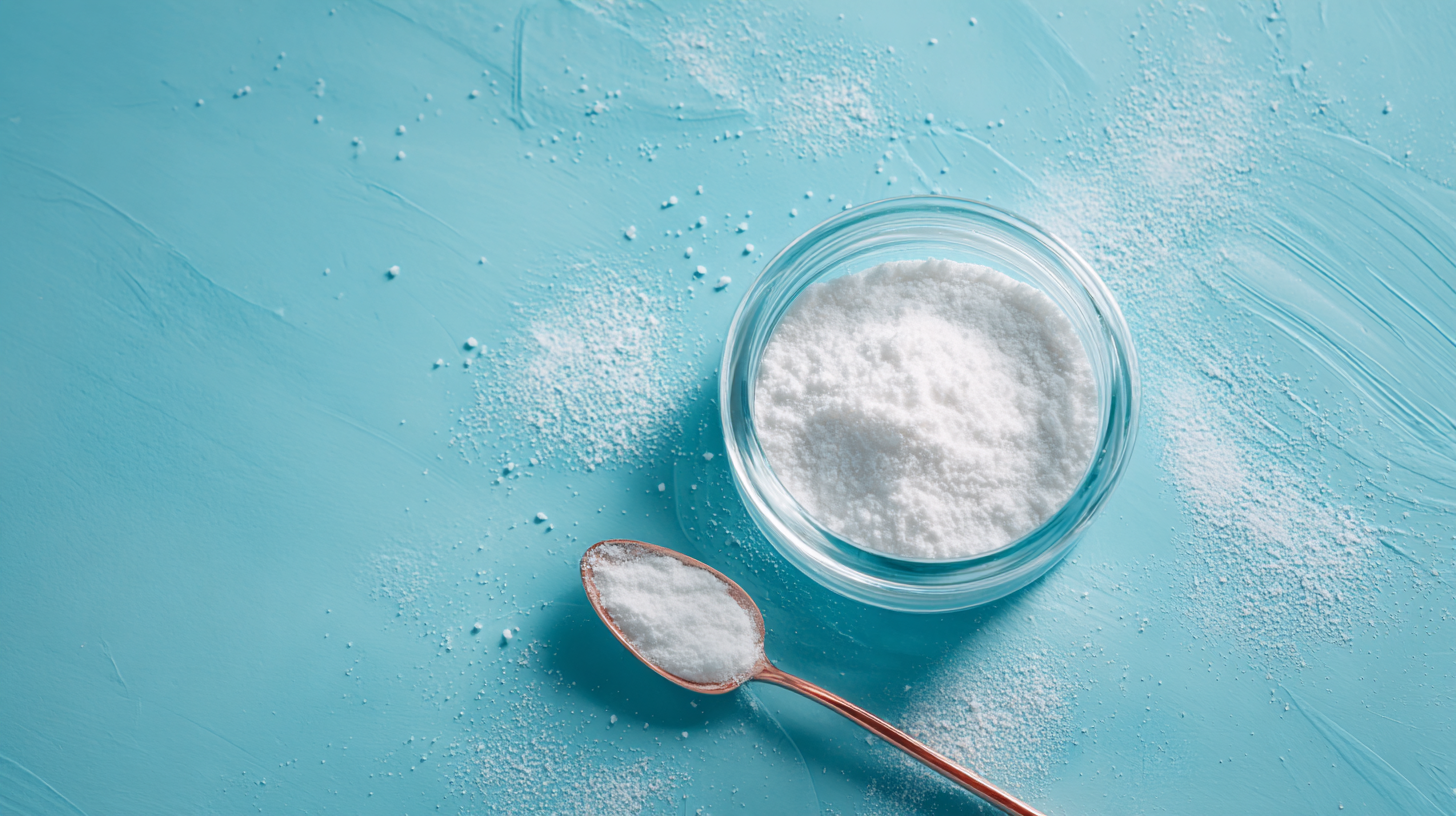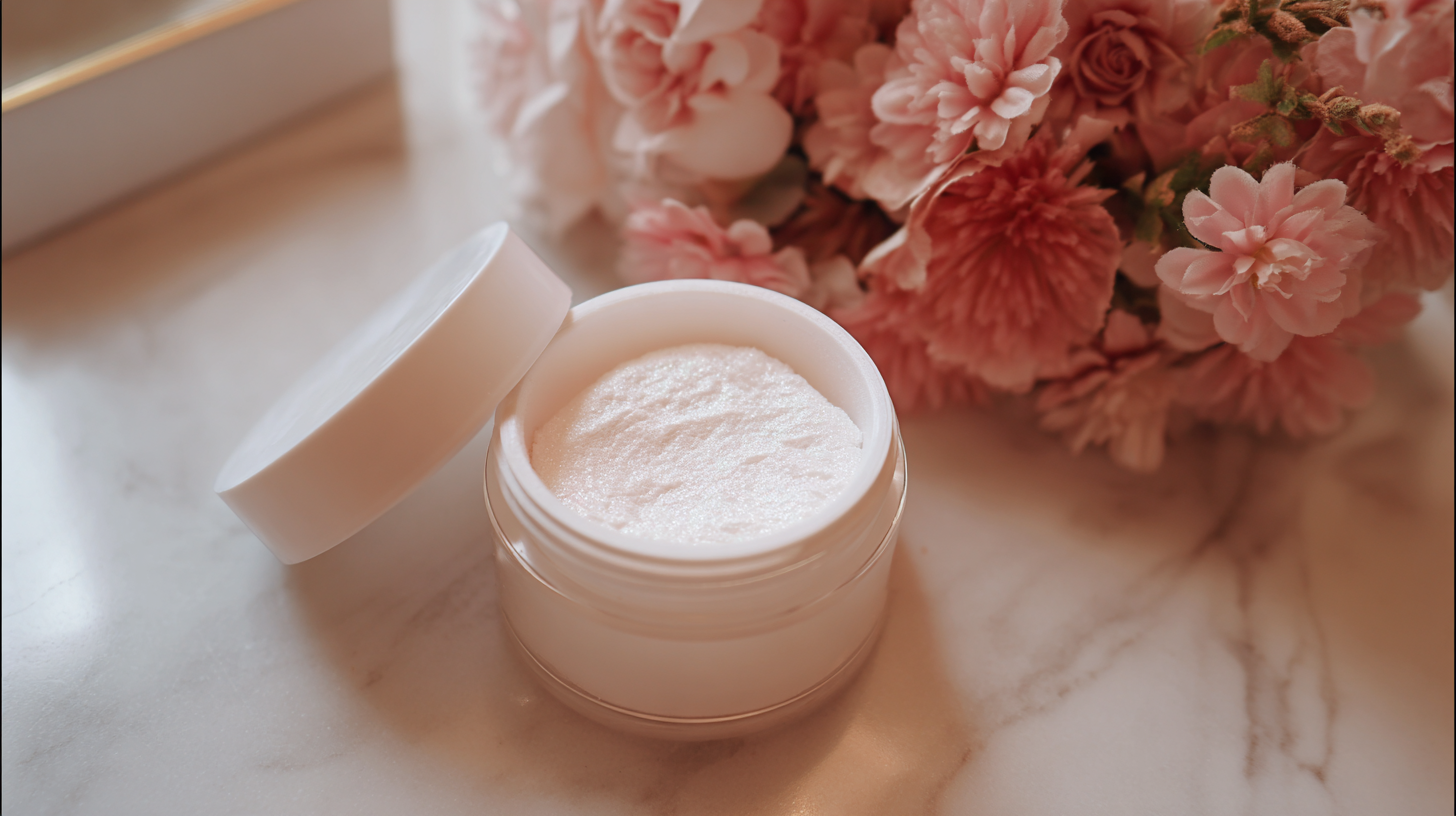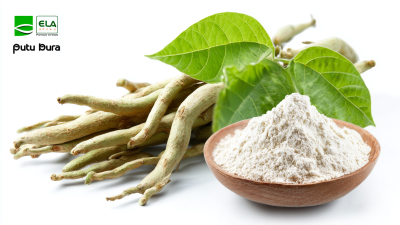 Tranexamic Acid Powder has gained significant attention in the skincare industry, particularly for its skin brightening properties. According to a report by Grand View Research, the global market for skin brightening products is expected to reach USD 9.75 billion by 2025, with an increasing focus on the efficacy of active ingredients like Tranexamic Acid. This ingredient, originally used in medical settings to reduce bleeding, has been found to inhibit melanin production, making it a game-changer for individuals battling hyperpigmentation and uneven skin tone. A study published in the Journal of Cosmetic Dermatology demonstrated that patients using Tranexamic Acid in topical formulations experienced a notable decrease in melasma and other pigmentation issues within 12 weeks. As consumers become more ingredient-conscious, understanding how to effectively incorporate Tranexamic Acid Powder into a skincare regimen is essential for achieving brighter, more radiant skin.
Tranexamic Acid Powder has gained significant attention in the skincare industry, particularly for its skin brightening properties. According to a report by Grand View Research, the global market for skin brightening products is expected to reach USD 9.75 billion by 2025, with an increasing focus on the efficacy of active ingredients like Tranexamic Acid. This ingredient, originally used in medical settings to reduce bleeding, has been found to inhibit melanin production, making it a game-changer for individuals battling hyperpigmentation and uneven skin tone. A study published in the Journal of Cosmetic Dermatology demonstrated that patients using Tranexamic Acid in topical formulations experienced a notable decrease in melasma and other pigmentation issues within 12 weeks. As consumers become more ingredient-conscious, understanding how to effectively incorporate Tranexamic Acid Powder into a skincare regimen is essential for achieving brighter, more radiant skin.
Tranexamic acid, primarily known for its role in treating excessive bleeding, has gained popularity in the skincare industry for its benefits in skin brightening. It functions by inhibiting the production of melanin, the pigment responsible for dark spots and uneven skin tone. This action not only helps reduce existing hyperpigmentation but also prevents the formation of new dark spots, making it an effective ingredient for individuals struggling with melasma or post-inflammatory hyperpigmentation.
In addition to its brightening properties, tranexamic acid has anti-inflammatory effects that can soothe irritated skin. This makes it suitable for all skin types, including sensitive skin that may react poorly to harsher treatments. Routine use of tranexamic acid can lead to a more radiant complexion and improved overall skin texture, allowing individuals to achieve a luminous look without aggressive chemical peels or laser treatments. Incorporating tranexamic acid powder into your skincare regimen can thus provide a multifaceted approach to achieving bright, even skin.
| Aspect | Details |
|---|---|
| What is Tranexamic Acid? | A synthetic derivative of the amino acid lysine, used to reduce skin discoloration. |
| Benefits | Reduces melanin production, improves skin brightness, evens out skin tone. |
| Recommended Concentration | Typically used in concentrations of 3-5% for effective results. |
| Application Method | Mix with a suitable base (like a serum or cream) and apply to the affected areas. |
| Frequency of Use | Can be used daily, preferably in the evening to enhance results. |
| Possible Side Effects | Mild irritation or allergic reactions in sensitive individuals. |
| Precautions | Patch test before use; consult a dermatologist if uncertain. |
When using tranexamic acid powder for skin brightening, it’s essential to follow best practices for mixing and application to achieve optimal results. Begin by selecting a reputable tranexamic acid powder, ensuring it's specifically designed for cosmetic use. To mix, use a sterile environment and clean tools to avoid contamination. Combine the powder with a suitable base, such as distilled water or your favorite serum, to enhance its absorption and effectiveness. Aim for a concentration of around 2-5%, as this range has shown promising results for skin brightening without causing irritation.

After preparing the mixture, the next step is the application. Start with a patch test on a small area of your skin to check for any adverse reactions. Once confirmed safe, apply the mixture evenly over your face or desired areas, focusing on hyperpigmented spots. It’s best to use the product in the evening to minimize sun exposure, and remember to follow up with a broad-spectrum sunscreen during the day. For optimal results, incorporate tranexamic acid into your skincare routine 2-3 times a week, gradually increasing frequency as your skin adjusts. These practices will help maximize the brightening effects while maintaining skin health.
Incorporating tranexamic acid into your skincare routine can be a transformative step towards achieving a brighter, more even complexion. This ingredient is known for its ability to reduce hyperpigmentation and improve skin tone. To begin, it’s essential to select a product that contains a suitable concentration of tranexamic acid. A formulation with 3-5% concentration is typically effective for most skin types. When first introducing it into your routine, start by using it two to three times a week to allow your skin to adjust, gradually increasing frequency as tolerated.
You can effectively integrate tranexamic acid into your existing regimen by applying it after cleansing and toning. It works well layered under serums and moisturizers, so consider applying it before any heavier products. If you’re using other active ingredients such as Vitamin C or retinoids, it’s best to alternate their use on different days or apply tranexamic acid in the evening to prevent potential irritation. Always follow up with a broad-spectrum sunscreen during the day, as tranexamic acid helps to brighten the skin but can also increase sun sensitivity. With consistent use, you can expect to see noticeable improvements in skin texture and tone over time.
When considering the use of tranexamic acid powder for skin brightening, it’s important to be aware of several precautions and potential side effects. Tranexamic acid, though generally safe for topical use, may cause skin irritation in some individuals. It’s essential to perform a patch test before applying it extensively to the skin. This test involves applying a small amount of the product to an inconspicuous area and monitoring for any adverse reactions such as redness, itching, or excessive dryness over 24 hours.

Tips for usage include mixing tranexamic acid powder with a suitable base, such as a moisturizer or serum, to enhance its efficacy and reduce the risk of irritation. Additionally, when using tranexamic acid, limit its application to a few times a week to avoid overwhelming the skin. Always follow up with sunscreen during the day, as increased sensitivity could occur.
Another important consideration is consulting with a dermatologist prior to incorporating tranexamic acid into your skincare routine, especially if you have underlying skin conditions or are using other active ingredients. They can provide personalized guidelines based on your skin type and needs, ensuring safe and effective use.
Tranexamic Acid (TXA) has emerged as a powerful ingredient in the pursuit of skin brightening, showing significant promise in clinical studies. According to a report published in the Journal of Dermatology, TXA effectively inhibits melanocyte activity, thereby reducing hyperpigmentation. For optimal results, it is essential to incorporate TXA powder correctly into your skincare routine. Mixing it with serums or moisturizers can enhance absorption and boost its efficacy, allowing for a more pronounced brightening effect.
To maximize results, consistency is key. Clinical trials have shown that daily application over a period of eight weeks can lead to a significant reduction in melasma and dark spots, with some participants experiencing up to a 50% improvement. Additionally, pairing tranexamic acid with complementary ingredients like vitamin C and niacinamide can enhance skin luminosity further. Furthermore, always conduct a patch test to ensure compatibility with your skin type and follow up with sunscreen during the day, as TXA can make the skin more sensitive to UV rays.






